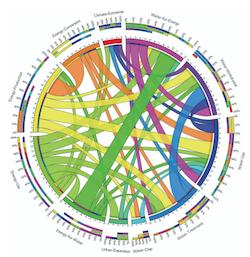Abstract
The energy-water nexus, or the dependence of energy on water and water on energy, continues to receive attention as impacts on both energy and water supply and demand from growing populations and climate-related stresses are evaluated for future infrastructure planning. Changes in water and energy demand are related to changes in regional temperature, and precipitation extremes can affect water resources available for energy generation for those regional populations. Additionally, the vulnerabilities to the energy and water nexus are beyond the physical infrastructures themselves and extend into supporting and interdependent infrastructures. Evaluation of these vulnerabilities relies on the integration of the disparate and distributed data associated with each of the infrastructures, environments and populations served, and robust analytical methodologies of the data. A capability for the deployment of these methods on relevant data from multiple components on a single platform can provide actionable information for interested communities, not only for individual energy and water systems, but also for the system of systems that they comprise. Here, we survey the highest priority data needs and analytical methods for inclusion on such a platform.
BibTex
@article{Allen2018,
author="Melissa R. Allen and Syed Mohammed Arshad Zaidi and Varun Chandola and April M. Morton and Christa M. Brelsford and Ryan A. McManamay and Binita KC and Jibonananda Sanyal and Robert N. Stewart and Budhendra L. Bhaduri",
year="2018",
journal="Big Earth Data",
year="2018",
volume="2",
number="3",
pages="197-227",
}
